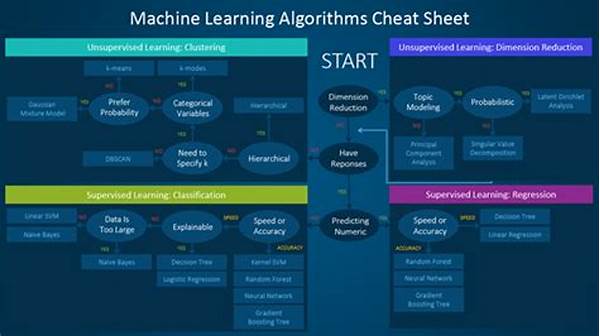In the vast landscape of technology, algorithms are the quiet masterminds that power everything from your Google search results to Netflix recommendations. But how do we determine which algorithm is the right fit for a specific problem? This question may seem daunting, but selecting the appropriate algorithm is like picking the right tool from a toolbox—it must be suited to the task at hand to achieve optimal results. In a world where data is the new oil, organizations and developers stand on the threshold of immense potential, provided they can harness the appropriate algorithms to distill actionable insights. Whether you’re a beginner in data science or a seasoned developer, choosing the right algorithm can make or break your project. As Sir Isaac Newton might say, it’s all about finding the right force to move your data universe!
Choosing the right algorithm involves understanding the data’s nature, the computational limitations, and the desired outcome. It’s akin to playing matchmaker between data and math. Let’s explore the nuanced art of algorithm selection.
Navigating the sea of algorithms can be overwhelming. However, the journey starts with identifying the problem type: is it a classification, regression, clustering, or searching issue? From there, understanding your data’s structure can narrow your choices. In other words, knowing how to select appropriate algorithms hinges on knowing your datasets intimately. Consider this: algorithms are like vehicles; you wouldn’t drive a Ferrari in a mud race, just as you wouldn’t use a brute force search algorithm on a large dataset if a more sophisticated approach like sorting or hashing would suffice.
Key Criteria for Selecting Algorithms
When delving into the topic of how to select appropriate algorithms, several crucial criteria come into play: data size, quality, processing speed, and accuracy needs. Venturing deeper, the resources available, such as computational power and memory, should not be overlooked. In essence, it’s not just about what you need the algorithm to do but also how it fits within your system’s constraints.
—
Structured Approach to Algorithm Selection
Choosing the right algorithm doesn’t happen by accident; it’s a structured process that can make the difference between success and failure in a data-driven project. Algorithms are essential for parsing through the labyrinth of information we encounter today, and understanding how to select appropriate algorithms is crucial for developers and analysts alike.
Identifying Problem Type
Every algorithm has a specific problem type it excels at solving. Classification, regression, clustering, and searching are just a few categories to consider. The problem type dictates the potential algorithms that could be the right fit.
Once the problem type is identified, the next step is to look at the nature of your data. Structured data, unstructured data, and even semi-structured data may require different approaches. Select algorithms that are designed to handle the specificities of your data format and the problem at hand.
Considering the constraints and objectives is equally important. What are the limits of your current computing capabilities? How much accuracy is required, and how fast do the results need to be produced? Balancing these aspects will help you understand how to select appropriate algorithms efficiently.
Evaluating Performance
Finally, the performance of the chosen algorithm in addressing the initial problem must be thoroughly evaluated. This ensures the chosen solution is indeed appropriate and effective. A thorough validation process can reveal whether tweaks or entirely different algorithms might yield better results.
—
Objectives of Algorithm Selection
When embarking on the journey to discover how to select appropriate algorithms, one should aim to achieve several objectives to ensure effectiveness and efficiency.
Understanding how to select appropriate algorithms requires not only technical prowess but also a sense of curiosity and the willingness to experiment. It’s an evolving practice, driven by advances in computational capabilities and emerging problems.
Choosing the right algorithm transforms not only the way data is processed and insights are gathered but also how businesses make strategic decisions. For instance, selecting a machine learning algorithm without considering the specificities of the problem at hand might lead to inefficiencies and missed opportunities.
Algorithm Testing and Validation
Trials and refinements are necessary to achieve the best fit. It’s a journey of continuous learning and adjustment. The landscape of technology is dynamic, and hence your approach to selecting algorithms must be as agile.
By establishing a structured and thoughtful approach, you can confidently navigate the complexities of algorithm selection. In today’s fast-paced tech world, understanding how to select appropriate algorithms is not just beneficial—it’s essential.

